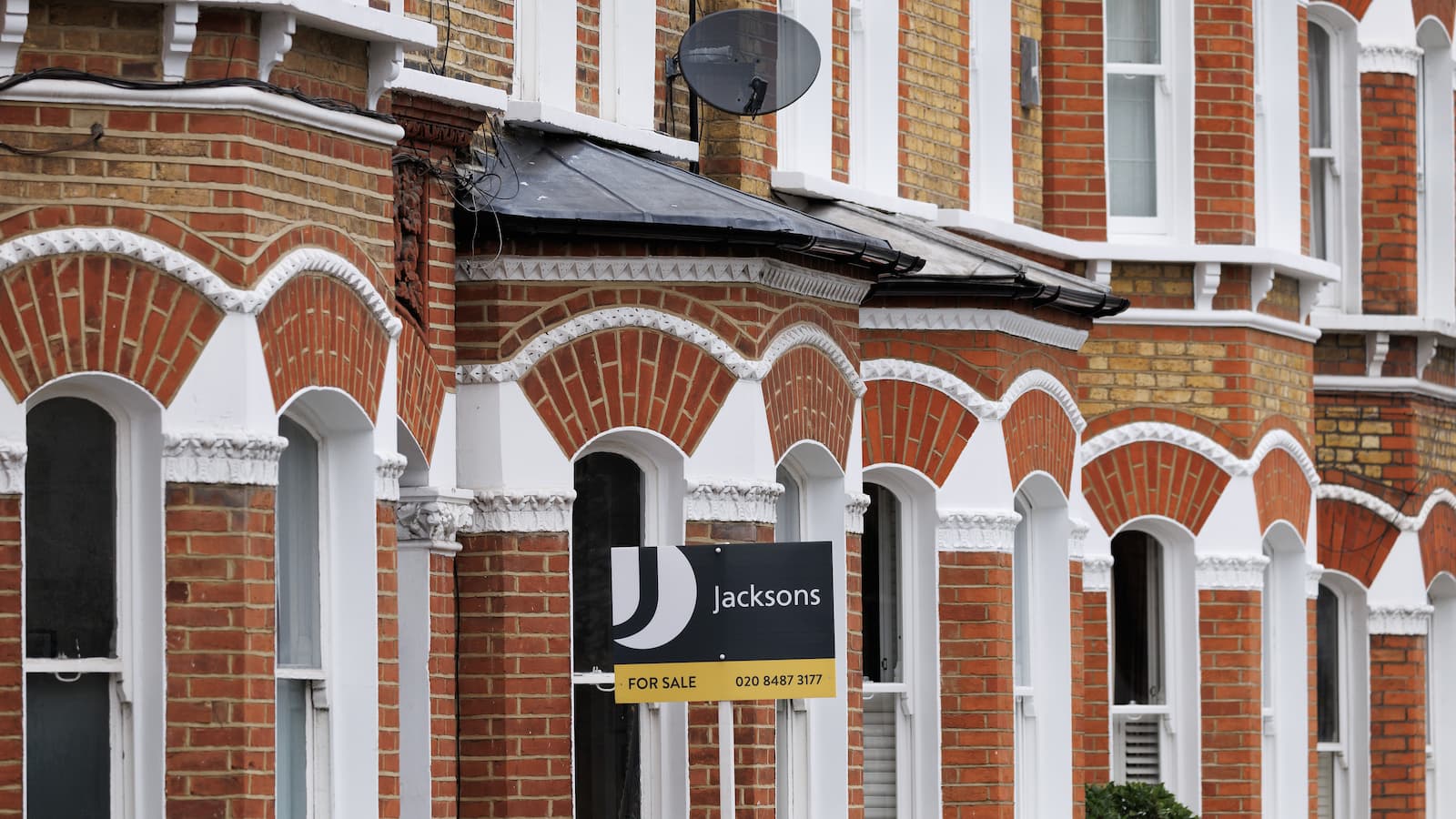How British homebuyers face higher costs, tougher lending rules and fewer rights compared to Europe and beyond
A deep dive into global mortgage systems reveals how the UK mortgage market is more difficult for buyers compared to elsewhere in the world

The aspiration of homeownership in the United Kingdom continues to be a challenging one for many, with a stark comparison to mortgage markets in other major economies revealing significant disadvantages for UK homebuyers.
While recent Bank of England interest rate cuts offer some respite, experts contend that fundamental differences in lending practices, affordability criteria, and market structures leave British hopefuls facing a steeper climb than their counterparts across Europe and beyond.
This article delves into the key aspects of mortgage markets, highlighting where the UK falls short and why those in the UK looking at buying a house may feel it is harder to do so.
UK mortgage costs pose a persistent premium
While the Bank of England has made successive cuts to its base rate in 2025, reaching 4.25% in May, average mortgage rates in the UK remain notably higher than in some European counterparts.
As of early June 2025, average two-year fixed rates in the UK hover around 4.89% (at 75% LTV), with five-year fixed rates around 5.14%.
In contrast, the Euro area mortgage rate stands at a more favourable 3.32% in Q1 2025, according to BNP Paribas Real Estate, which provides global market insight.
Within the Eurozone, countries like Germany are seeing typical fixed rates ranging from 3.5% to 5% for fixed-rate home loans, with best profiles potentially securing around 3.30% in France for a 20-year term. Even in Ireland, where rates are among the highest in the Eurozone, the average mortgage rate fell to 3.72% in April 2025. This shows a consistent pattern of lower borrowing costs across a significant portion of Europe.
Bring your dream home to life with expert advice, how to guides and design inspiration. Sign up for our newsletter and get two free tickets to a Homebuilding & Renovating Show near you.
Beyond interest rates, the UK mortgage market is also characterised by a range of fees, including arrangement fees, valuation fees, stamp duty fees and legal fees, which can add significant upfront costs.
While some lenders offer deals with reduced or no fees, the overall cost of securing a mortgage in the UK often appears higher when compared to countries with more streamlined processes or government-subsidised lending.
Deposits form a formidable barrier

Perhaps one of the most significant hurdles for UK homebuyers, particularly first-time buyers, is the substantial deposit required.
MoneySuperMarket data for 2025 indicates that the average deposit for a first-time buyer in the UK is a staggering £75,072.
In London, this figure inflates to an even more daunting £151,731 for an average property value of £512,605, representing nearly 30% of the property's value. While schemes like Deposit Unlock for new builds offer some relief, the widespread expectation of a significant down payment limits access for many.
In several European nations and other major economies, lower loan-to-value (LTV) ratios are often available, or government-backed schemes are more prevalent and accessible, reducing the initial financial burden on aspiring homeowners.
In Germany, full residents can often borrow up to 100% of the property's value with no down payment, although a deposit is usually needed for a better rate and to cover closing costs. Non-residents, however, typically require a deposit of at least 40%.
France commonly expects a personal contribution of 10% to 20% to cover ancillary costs, though non-resident buyers may need a larger deposit of 25% to 50%. However, France's expanded "zero-interest loan" (PTZ) scheme in 2025 can finance up to 50% of the total project cost for eligible households, significantly reducing the required cash contribution.
In the Netherlands, first-time homebuyers are putting down an average of just over €91,000 for a loan of €393,000, as house prices have risen. This indicates a substantial deposit is also common, but not necessarily a higher percentage of the property value than in the UK.
Canada generally requires a minimum down payment of 5% on homes up to $500,000, and 10% on the portion between $500,000 and $1,499,999, rising to 20% for homes over $1.5 million. This often translates to a lower percentage requirement for many homes compared to the UK's typical 10-20% expectation.
Australia offers even more flexibility, with many lenders accepting a minimum deposit of 5% with Lender's Mortgage Insurance (LMI). Government schemes like the First Home Guarantee (FHBG) and Regional First Home Buyer Guarantee (RFHBG) allow eligible buyers to purchase with a 5% deposit and avoid LMI, and the Family Home Guarantee (FHG) allows single parents to buy with as little as a 2% deposit and no LMI.
Length of mortgages hurt UK borrowers
The typical mortgage length in the UK has been gradually increasing, with MoneySuperMarket data showing an average term of 29.1 years in 2025.
While longer terms can reduce monthly repayments, they inherently lead to a higher overall cost of borrowing due to the extended period over which interest accrues.
In some European countries, while longer terms exist, there can also be a greater emphasis on shorter fixed-rate periods within those longer terms, encouraging earlier repayment or frequent refinancing to secure better rates.
For example, in Germany, mortgages are generally available with fixed interest rates of 10 to 15 years, repaid over 25 or 30 years, and many borrowers can make extra payments of up to 5% each year without penalty. This offers more flexibility for accelerated repayment.
Self-build and renovation mortgages differ

For those aspiring to build their own home or undertake significant renovations, the UK mortgage market presents a challenging landscape.
Self-build and renovation mortgages are often considered specialist products, carrying higher interest rates and requiring substantial deposits (sometimes as high as 35% for bridging loans) due to the perceived increased risk for lenders.
Lenders also demand detailed cost estimates and renovation plans, with multiple inspections throughout the project.
"Financing a self-build or major renovation in the UK is typically more complex and expensive than securing a standard residential mortgage," says a spokesperson from Extend Finance, a specialist mortgage broker. "While some European countries have more established frameworks and even government support for custom-built homes, the UK market for these types of loans often comes with a premium and more stringent conditions."
In some European nations, there's greater integration of self-build and renovation into mainstream lending, often with more favourable terms or government incentives.
For example, Germany offers Kreditanstalt für Wiederaufbau (KfW) loans, which are government-backed loans for energy-efficient new builds or renovations, offering lower interest rates.
Who can apply for mortgages is more restricted in UK
While there isn't a strict upper age limit for mortgage applications in the UK, lenders do apply maximum age limits at the end of the mortgage term, typically ranging from 75 to 85 years old.
This can significantly limit the mortgage term available to older applicants, leading to higher monthly repayments. While some lenders are adapting to "lend into retirement," the affordability assessment remains rigorous.
In contrast, some European countries have more flexible approaches to age and retirement income. While specific pan-European age limits are not uniformly codified, countries like Spain and Portugal, are more amenable to considering a borrower's overall financial health and assets rather than imposing strict age cut-offs at the end of a long mortgage term, especially for those with substantial pension income or other investments.
UK lenders are also known for their stringent affordability checks, which became even more rigorous following the 2008 financial crisis.
These checks analyse a borrower's income, outgoings, and often include "stress tests" to ensure repayment capability even if interest rates rise. While designed to protect borrowers, critics argue these tests can be overly conservative, excluding otherwise creditworthy individuals.
MoneySuperMarket notes that lenders usually offer up to 4.5x the total annual income for a mortgage, with exceptions for higher multiples.
Valuations and early repayment charges: The UK's own quirks
Early repayment charges (ERCs) are also a common feature of fixed-rate mortgages in the UK, penalising borrowers who pay off their mortgage early or switch to a new deal within the fixed term.
These charges can be a significant deterrent to refinancing, even if better rates become available elsewhere.
Confused.com indicates that ERCs are typically 1-5% of the outstanding mortgage balance and often decrease annually over the fixed term. Most UK mortgages allow a 10% overpayment each year without incurring an ERC.
While ERCs exist in various forms globally, their prevalence and structure in the UK can feel restrictive to homeowners seeking flexibility.
In some European countries, while fixed-rate products may have penalties, a greater variety of variable-rate or semi-fixed products might offer more flexibility without significant exit fees, or the penalties might be less onerous or structured differently.
For example, in Germany, while fixed-rate loans often come with penalties for early repayment, borrowers typically have the option to make extra payments of up to 5% each year without penalty.
What you need to apply varies greatly
Applying for a mortgage in the UK often involves a considerable amount of paperwork and scrutiny. Beyond basic personal identification and proof of address, applicants typically need:
- Proof of income: Payslips (typically 3-6 months), P60s, and potentially two to three years of tax returns for self-employed individuals.
- Bank statements: Usually 3-6 months of statements to assess spending habits and financial stability.
- Credit history: A strong credit score is paramount, with any past financial blemishes potentially hindering applications or leading to less favourable rates.
- Proof of deposit: Documentation showing the source of funds for the down payment.
- Details of existing debts: All outstanding loans, credit cards, and financial commitments are thoroughly assessed.
While similar requirements exist in other countries, the intensity of the affordability assessment and the expectation of impeccable financial history can be more pronounced in the UK.
For instance, while Canada also requires extensive documentation, the minimum down payment requirements (as discussed earlier) can make the initial hurdle seem lower, potentially easing the overall application stress for some buyers.
UK mortgages must be fairer
In conclusion, while the UK mortgage market is robust and offers a range of products, a global perspective reveals areas where UK homebuyers face inherent disadvantages.
Higher overall costs due to interest rates and fees, demanding deposit requirements, a less flexible approach to self-build and renovation financing, and stringent affordability criteria all contribute to a feeling among many that the system could be fairer.
As the UK economy navigates its path in 2025, a critical examination of these disparities and potential reforms could pave the way for a more accessible and equitable homeownership journey for its citizens.

News Editor Joseph has previously written for Today’s Media and Chambers & Partners, focusing on news for conveyancers and industry professionals. Joseph has just started his own self build project, building his own home on his family’s farm with planning permission for a timber frame, three-bedroom house in a one-acre field. The foundation work has already begun and he hopes to have the home built in the next year. Prior to this he renovated his family's home as well as doing several DIY projects, including installing a shower, building sheds, and livestock fences and shelters for the farm’s animals. Outside of homebuilding, Joseph loves rugby and has written for Rugby World, the world’s largest rugby magazine.
